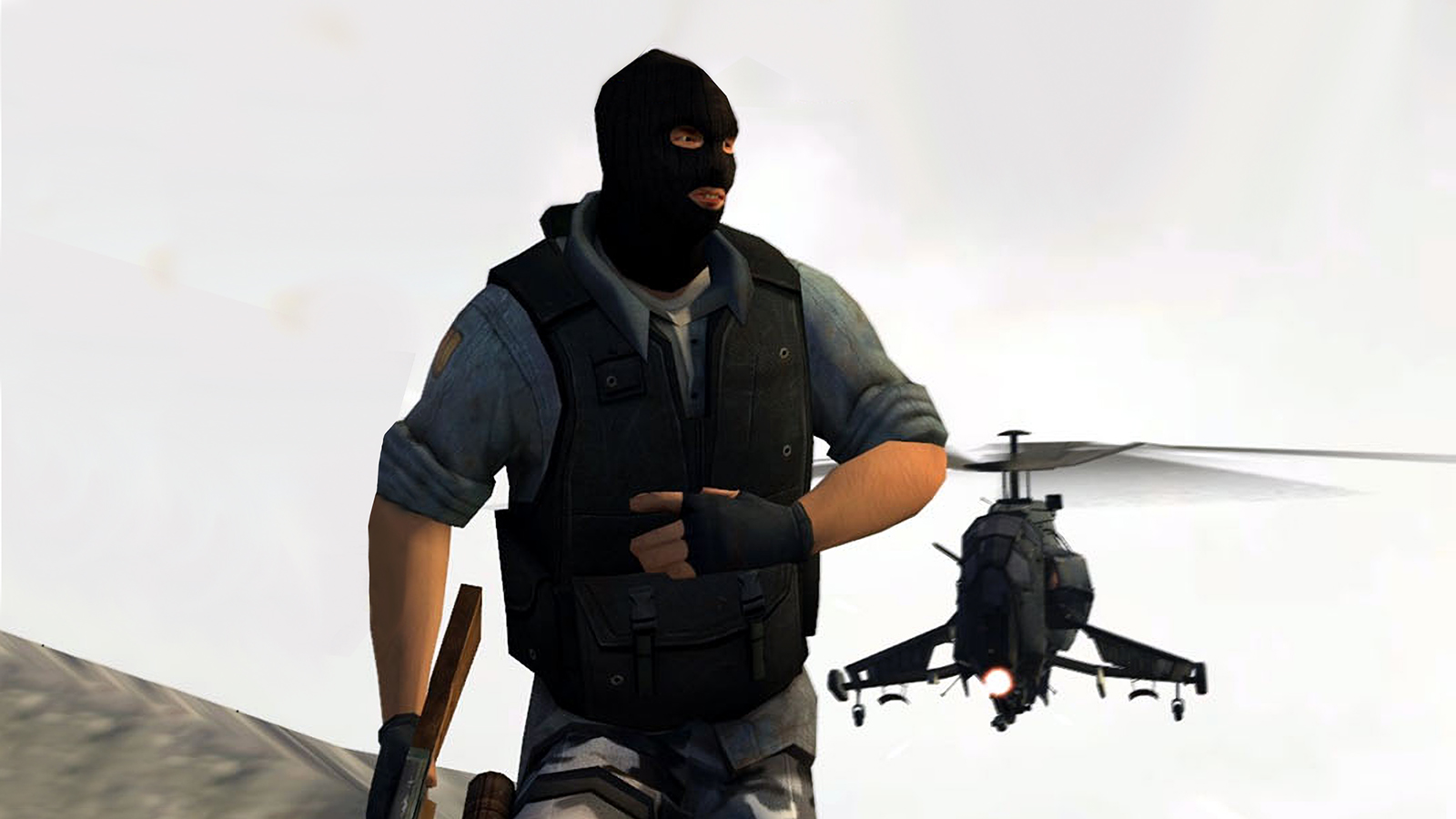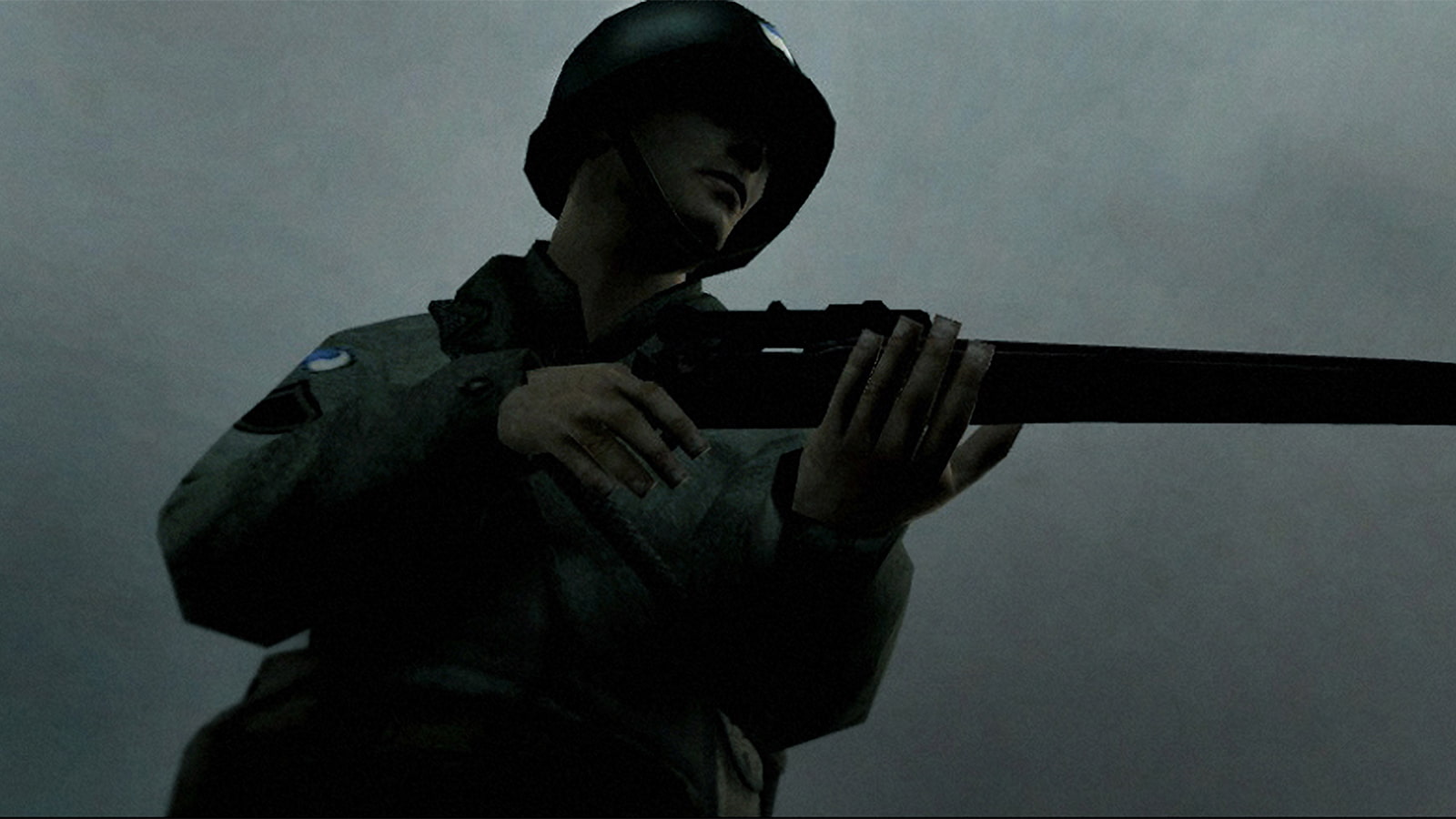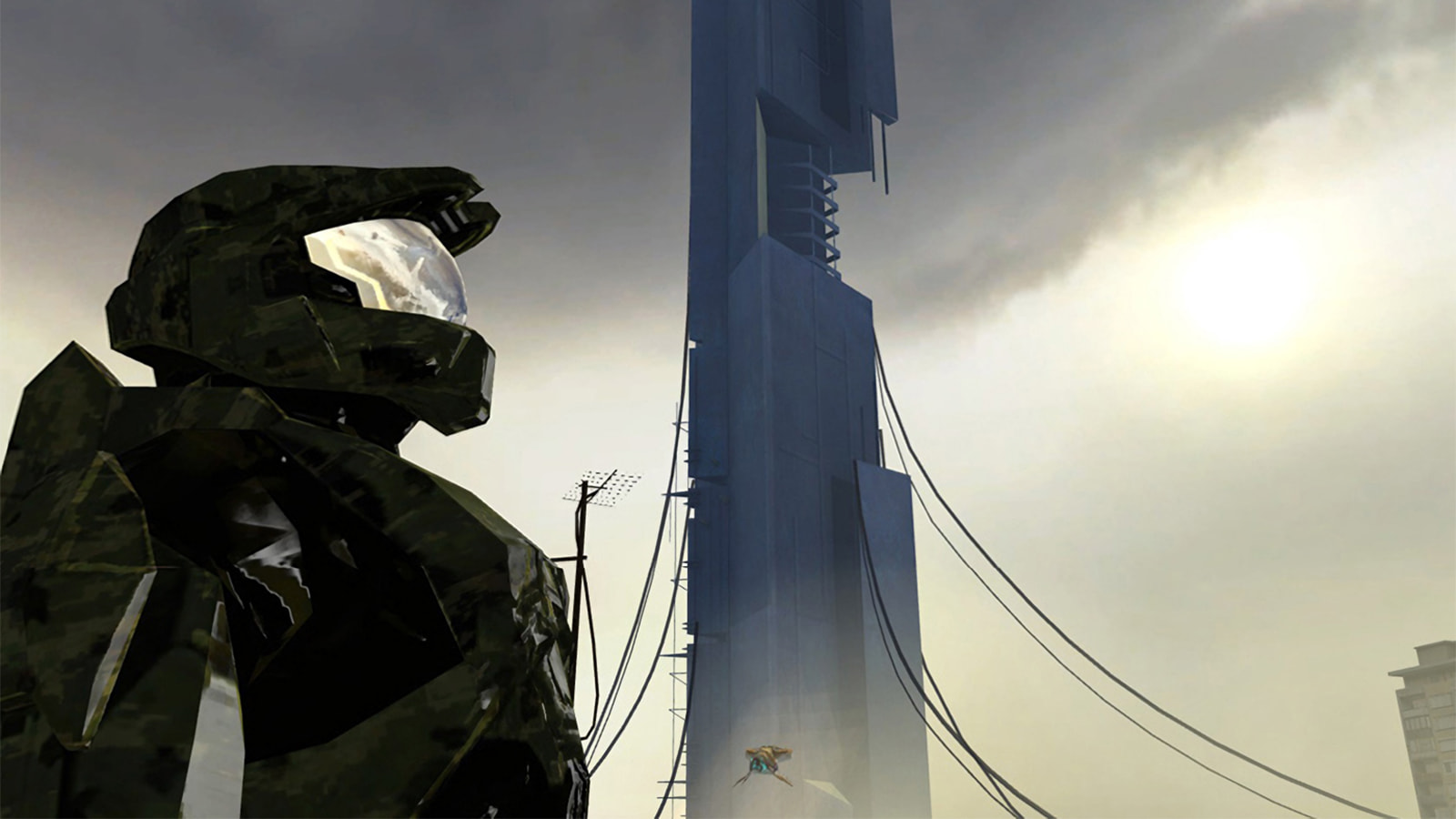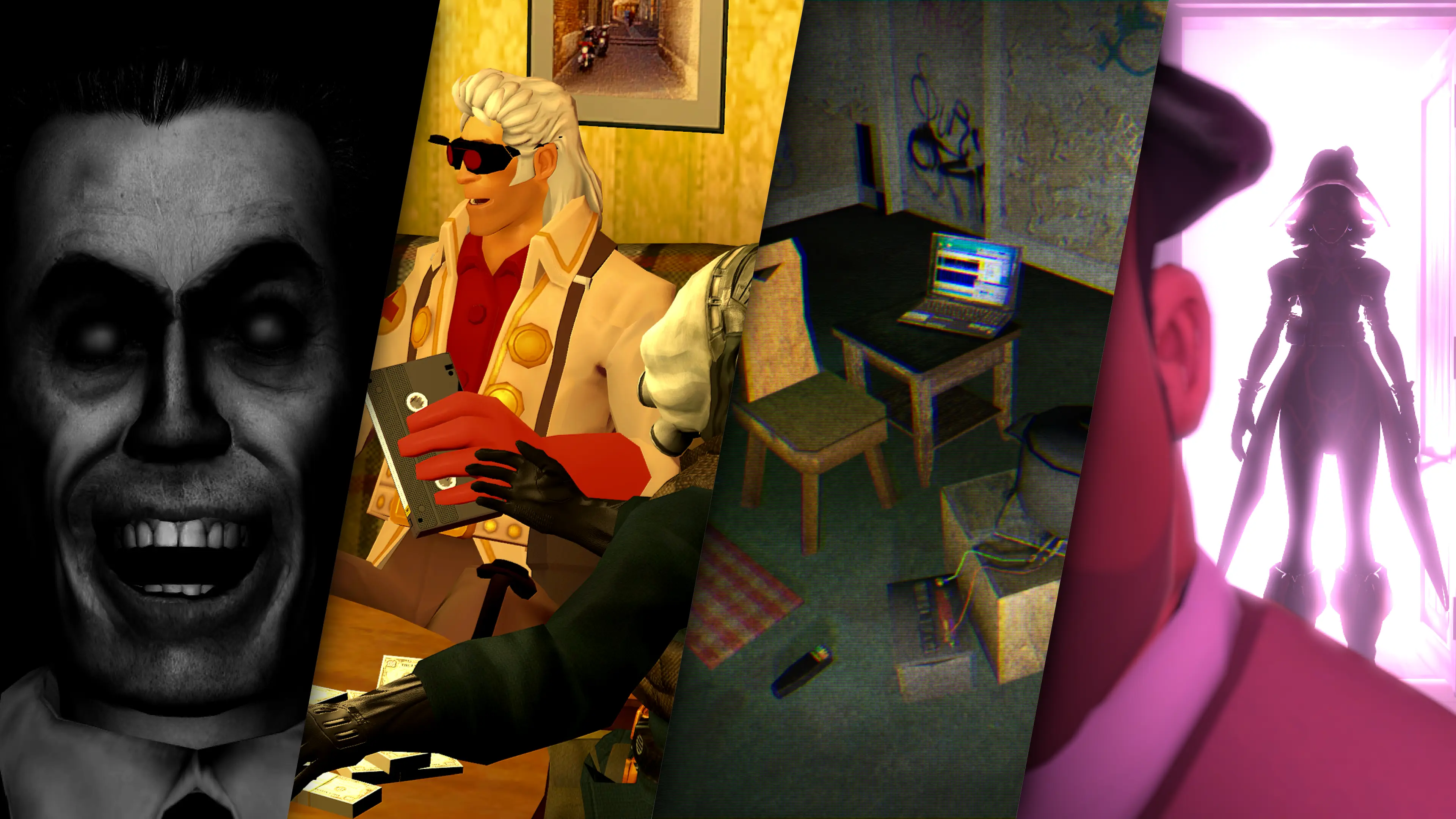If you’re new to Garry’s Mod comics and Metrocop specifically, it’s understandable if you visit our archive of comics created with the Source engine and feel absolutely overwhelmed. After all, just at the time of writing this, there are 50 completely distinct series and over 600 individual comics to read—it’s a lot, and it’s only gonna keep growing!
So, to make getting started a little bit easier for you, we’ve compiled a list of comic series that serve as a jumping-on point into our massive collection, divided between what you might be interested in reading. Enjoy and let us know in the comments if you have any questions or other recommendations for starting points!
If you like Half-Life

- Apostasy, by James “BrashFink” Brandt: one of the original Half-Life 2 fan-made comics and still a seminal, if unfortunately somewhat forgotten, work, Apostasy is basically a Half-Life 2 graphic novel following the denizens of City 17 in the days prior to the arrival of Gordon Freeman. While some of it, particularly the posing, has aged and some details no longer work with the revised and clarified timeline of the Half-Life series post-Episode One, it’s still an incredibly engrossing and expertly edited read;
- Beyond Borders, by Jim_Riley: a classic series from 2006 that was brought back in 2015, Beyond Borders is set in an alternate timeline to the main Half-Life universe, with some familiar characters in surprising situations. Mark, an ordinary citizen of City 17 who comes across a rebel uniform, tries to escape the city with Civil Protection hot on his trail. Every part of this series, from the writing to the posing and the editing, is top-notch, making it a must-read;
- My Last Night in Ravenholm, by Richard Boisvert: another early Half-Life 2 comic series from 2005, a few parts of My Last Night in Ravenholm are understandably not up to the standards of later works, but the writing and sheer atmosphere are unparalleled, telling the grueling tale of Richard, a refugee from Ravenholm who sees first-hand the destruction of the town from the Combine’s headcrab shelling. It’s also the rare series that was actually completed and the full story, complete with a surprising link to Half-Life 2 in the end, is one well worth reading;
- Kaden, by Mark “Orpheus” Charest: a relatively recent and extremely short series—only one episode has been released at the time of this article—, Kaden still stands out by the sheer production values. Painstakingly created over a period of years, this stunning comic that pushes the limits of Garry’s Mod follows the eponymous protagonist, a rebel with deep-seated traumas who leads a team into the Outland’s antlion-infested mines for a deal with another group of rebels;
- Infection and Subject 23, by Pyren: a duology of unique Half-Life comic series from the same author and sharing continuity, with Infection being a horror-action series while Subject 23 is more of a mystery thriller. Your mileage may vary on which you prefer, but make sure to read Infection first as the latter is a spin-off/sequel to that series. Infection also had a prologue episode for a sequel series, Infection 2, that was remade by notorious Garry’s Mod comic maker Shazbot to great effect;
- The Adventures of Hercule Cubbage, by Mythos: seeing as this was Metrocop’s first comic series, it’s worth mentioning the story of the hitherto unknown son of Colonel Odessa Cubbage, Hercule Cubbage, whose self-exile to City 17 is interrupted by a Combine broadcast about the One Free Man. Faithful to the Half-Life canon to a fault, The Adventures of Hercule Cubbage is currently composed of six chapters out of a planned nine—though only time can tell if more will ever be made.
If you love comedy

- Kenny the Cop, by Mjolnir82991: a trailblazing series, this 2005 Garry’s Mod comic classic focuses on a group of Combine rejects exiled to GM_Construct, among which is the titular Kenny, an inept metrocop that causes more troubles than he solves. The initially humble series made by the then 13-year-old creator improves by leaps and bounds as it progresses, culminating in some of the funniest and best Garry’s Mod comics ever made;
- Jeff, by Jeff “Clover” Eastman: another early 2005 series, Jeff actually predates many of the hallmarks of Garry’s Mod comics and Half-Life fandom, including even Concerned: The Life and Death of Gordon Freeman and the now-defunct comics site PHWOnline. Much like Kenny, Jeff begins unassuming and primitive, but matures alongside its author and really hits its stride after the first 30 episodes, developing into a hilarious and expertly done humor comic. While, unfortunately, some later issues remain lost, it’s still the longest series in the archive at over 100 comics and a must-read for anyone interested in the genre;
- The Banner, by Okimin and Waxx: a 2012 Half-Life comedy series about one of the last surviving newspapers under Combine rule, The Banner, and the staff that haphazardly keep it running, this short-lived series has the signature of one of the most experienced and popular Garry’s Mod comic makers of his time, Waxx, whose other groundbreaking work, Ravenholm Armory, sadly remains lost to time. The three episodes that compose this series are some of the most hilarious and best written Garry’s Mod comics ever made (credit to the co-author, Okimin, who wrote the scripts) and are downright professional;
- Combine Exchange Program, by Mjolnir82991: another series by Kenny author Mjolnir82991, Combine Exchange Program was his highly celebrated return to comic making in 2015, in the heyday of the original Metrocop website. Mjolnir’s skills did not rust with time; on the contrary, Combine Exchange Program manages to be even better than the classic later episodes of Kenny the Cop. Originally comprised of five episodes, Combine Exchange Program also has the rare honor of being the first continuing series of the new Metrocop website, picking up exactly where it left off in 2017;
- Worse than Life, by AJ Rimmer: a 2006 original humor series, Worse than Life distinguishes itself from the typically slapstick humor of other Garry’s Mod comics by virtue of being a self-deprecating dark humor series, detailing the life of the author’s self-insert protagonist. While some of the humor, by the author’s own admission, has aged poorly and can be a bit insensitive and harsh, not to mention the unfortunate loss of many episodes over time, Worse than Life is still a pioneering and important series that, most notably, is still incredibly fun to read and even had a short comeback on Metrocop with new episodes in 2013.
If you prefer original drama

- Gray Saints, by Jim_Riley and Uberslug: though not the only World War II-inspired Garry’s Mod comic series to ever be created, the 2007 Garry’s Mod comic series Gray Saints, co-authored by Beyond Borders creator Jim_Riley with editing assistance from Uberslug, impresses not only by its grittiness and uncompromising violence that brings to mind the Spielberg classic Saving Private Ryan, but also by the human touch of the writing that fictionalizes the real-life United States Army 29th Infantry Division. Its short two-episode run displays the flexibility and range that these humble webcomics created with a videogame can accomplish;
- Skyline Bandits and BraneWorlds, by Hazard-Life: Hazard-Life, also known as Haz-Life, was a prolific Garry’s Mod comic maker best known for his original works. Many are regrettably gone, but two that thankfully aren’t are Skyline Bandits, a complete eight-part space Western about two solar farmers who come across a strange coffin that fell from space, and BraneWorlds, a series about a private detective that finds himself embroiled on a hunt in a multiversal scale that lasted four episodes;
- Fuel On Fire and Rosetta Fallen, by Mike “Delirium” Dolor: perhaps the most prolific Garry’s Mod comic maker of his generation (from 2007 to 2010), Mike Dolor a.k.a. (Growing)Delirium’s magnum opus is arguably Fuel On Fire, itself a reimagining of an earlier series of the same name, about a girl named Regina who accidentally gets involved in an ancient war and possessed by something known only as “the Paragon”. His other series Rosetta Fallen is a slower-paced mystery about the last surviving angel, who fell to Earth for unknown reasons, and indirectly says a lot about Delirium’s own views on religion. How these two series are connected is something I won’t spoil, but they’re definitely something you should experience.
If you enjoy a good crossover

- Half-Spartan, by Mike “Delirium” Dolor: we’ve already talked about Delirium and his penchant for dramatic series, but he was also responsible for some off-the-wall, absurdist comedy series. One of those, and the one responsible for his popularity in the first place, was Half-Spartan, an unlikely Halo/Half-Life 2 crossover starring the one and only Master Chief, who strands himself in City 17 and finds a love interest and a new life as the wrong man in the wrong place;
- Team Life, by Karl “Near Elite” Gustafsson: best known for his legendary humor series of 2006 and 2007, Near Elite made a triumphant return to comic making with this Team Fortress 2/Half-Life 2 crossover, an idea so obvious it’s amazing nobody had thought of that before. After a teleporter gets sabotaged, the BLU Heavy and Medic are plucked from their dimension and thrown into City 17, after a little nudge from the ever-enigmatic G-Man;
- Pokémon Burgundy Version, by FZE: what happens when you drop one of the most dry-witted and cynical Garry’s Mod comic makers into the magical world of Pokémon? That’s the question Pokémon Burgundy Version tries to answer as FZE kidnaps his way into becoming a Pokémon Trainer, gets an arbitrary female companion and makes a rival out of infamous comic maker PopwarBunny in this hilarious, if short, comic series;
- The PoB/CR-O War, by Looshkin, Mike “Delirium” Dolor, FZE, Mythos, Arctic Avenger, Chrisordie, Slamex, DirtyDiaper, Nemi, MarkIsSpiffy, CJR, Silver, Germantrooper and Blackout62: The PoB/CR-O War is still possibly the most ambitious crossover of Garry’s Mod comics, with 14 different creators getting involved in a massive 40-part series. Spurred by Looshkin provoking the comic making group Phenomena on Break, a massive, convoluted and often nonsensical conflict marked the GMod comics community in 2008 like no other before or after.
If you want to get to know the Garry’s Mod comic subculture

- About, by Karl “Near Elite” Gustafsson: self-insert characters, referred to as “personal skins” (or “perskins” for short), were a common occurrence in the Garry’s Mod comic community from 2006 all the way to 2015. One of the best early examples is Near Elite’s About, which started off as a series about (get it?) Counter-Strike: Source maps, but soon focused on introducing other members of the community, serving as a great (and hilarious) primer into the Garry’s Mod comics community of the mid-2000’s;
- Robot Insurance, by Mike “Delirium” Dolor: a 2007 comic series chronicling the daily teenage life of Delirium, Robot Insurance was also, for a time, the heart and soul of the small late-stage comic making community known as Phenomena on Break, with recurring appearances from other members that are still, to this day, active in the community;
- FZE and Mythos’ Badass Adventure, by FZE: this short two-parter from 2010 sees FZE and Mythos, then both members of a community called the Brain Dead Union, on a buddy comedy in a bizarre diner, in a good example of how downright entertaining these types of personal skin comics could be;
- The Last War, by Karl “Near Elite” Gustafsson: another one by Near Elite, this time with a more dramatic tone as figures from the comics community of the old Facepunch Studios forums play the role of world leaders in a calculated and bitter war between ideologies. This type of personal skin comics doesn’t get much bigger than this;
- The Other Side, by Lt_Commander: one of the later perskin series, Lt_Commander—best known as a modeller and texturer, but with a few underrated comics to his name—tells the story of his own group, the Beret Brothers, finding an alternate “mirror” dimension where their counterparts play vastly different roles in a dystopia. Incomplete at four parts, it’s still a worthwhile read to get a feeling for the Garry’s Mod comics community of 2011.


Here’s to hoping Concerned featuring Gordon Frohman also shows up. That is the BEST HL2 fancomic I’ve ever read in my life, that’s for sure. Highly recommend it, even if it focuses a lot on video game logic that might turn off the realism-focused reader.